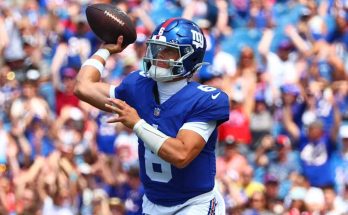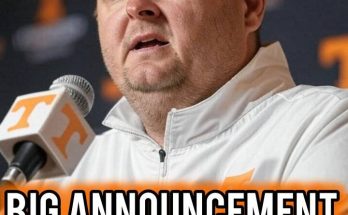The former No. 1 pick may have found his way back into the NBA spotlight, and in a surprising role.
Ben Simmons, once heralded as the future face of the NBA, now finds himself at a crossroads few imagined. From dominating defenses as a 6’10” point guard with elite vision and control to being considered a candidate for a backup center role, Simmons’ basketball journey has taken a dramatic and unexpected turn. But in Boston, a city known for its grit, resilience, and redemption stories, Simmons might just find the ideal backdrop for a reinvention that could change the course of his career—and possibly help extend a dynasty.
The Boston Celtics, reigning NBA champions, have had a busy offseason, but not without sacrifice. Their dominant frontcourt rotation—anchored by Kristaps Porzingis, the dependable Luke Kornet, and veteran leader Al Horford—faces a potentially seismic shift. Porzingis is recovering from serious injury, Kornet is gone after cashing in on his breakout season, and Horford, as durable as he’s been, is reportedly considering retirement or at least a heavily reduced role. Suddenly, the most well-rounded team in the league finds itself dangerously thin in the frontcourt.
Enter Ben Simmons.
It’s a name that still triggers debate across NBA circles. Once an All-Star and Defensive Player of the Year finalist, Simmons was the centerpiece of the Philadelphia 76ers’ long-awaited rebuild. He was supposed to be the bridge between “The Process” and a championship. But years of offensive hesitancy, free throw woes, injuries, and a deteriorating relationship with teammates and fans turned him into one of the most polarizing figures in recent NBA history. His time with the Brooklyn Nets was marred by inconsistency, back issues, and minimal impact. The Ben Simmons that once drew comparisons to Magic Johnson and LeBron James was suddenly an afterthought, a player many wondered would ever return to form.
And yet, the tools remain. At 6’10” with a long wingspan and fluid movement, Simmons still brings elite defensive potential. His ability to switch across all five positions, disrupt passing lanes, and contest shots without fouling makes him a rare asset in today’s NBA. And while his offensive game may never resemble that of a traditional star, his vision and transition passing remain top-tier. In a system where he’s not asked to be the focal point but simply to contribute within a clearly defined role, Simmons might be able to thrive again.
Boston, with its defined hierarchy and championship infrastructure, presents that very opportunity.
Unlike his stints in Philadelphia and Brooklyn, Simmons wouldn’t be expected to lead this Celtics squad. That responsibility belongs to Jayson Tatum and Jaylen Brown, the superstar duo that delivered Banner 18 to the Garden. With Derrick White emerging as an All-NBA caliber guard and Anfernee Simons arriving as a microwave scorer, Simmons would be free to settle into a role that suits him: defend, rebound, make smart passes, and anchor bench lineups. It’s a dramatic shift from his previous roles, but it’s exactly the kind of role reinvention that can prolong a player’s career and redefine their legacy.
In many ways, the Celtics have done this before. Luke Kornet, an undrafted big man once viewed as a fringe NBA talent, became a critical piece of Boston’s rotation. With the right coaching, minutes management, and tactical deployment, Kornet turned into a reliable contributor on both ends of the floor—and cashed in with a \$40 million contract elsewhere. The Celtics’ coaching staff, led by Joe Mazzulla, has proven capable of identifying niche roles and maximizing them. It’s not hard to imagine Simmons taking on a similar path, albeit with significantly more upside if his health cooperates.
The most intriguing aspect of this potential partnership is the flexibility it offers. Simmons isn’t a traditional big man, but in today’s NBA, the definition of a center is more fluid than ever. Draymond Green and Bam Adebayo have already redefined what it means to be a small-ball five. Simmons, with his elite size, lateral quickness, and passing chops, could excel in a similar role—particularly in the Celtics’ switch-heavy defensive scheme. Imagine a bench unit where Simmons is flanked by shooters and athletic wings, pushing the pace in transition, initiating offense from the elbow, and locking down opponents on the other end.
The biggest hurdle, of course, is health. Simmons’ back issues are well-documented, and his availability has been inconsistent at best. But at this stage in his career, with minimal expectations and a short leash, the stakes are different. The Celtics wouldn’t be asking Simmons to play 35 minutes a night or to save the franchise—they’d be asking him to fill 10-15 high-impact minutes off the bench. Manageable minutes, clear expectations, and a culture of accountability could be the combination that reignites his competitive fire.
Boston’s culture is also uniquely positioned to help a player like Simmons rediscover his confidence. The Celtics are known for their demanding but supportive environment, led by veterans like Jrue Holiday and Horford (if he returns), who set the tone on and off the court. This isn’t Brooklyn or Philly, where Simmons was either a franchise cornerstone or an embattled scapegoat. In Boston, he’d be a role player, one of many cogs in a championship machine. That kind of anonymity—rare for a former No. 1 pick—could be liberating.
There’s also the matter of redemption, something Boston sports fans understand better than most. From Paul Pierce overcoming early career struggles to become a Finals MVP, to Kevin Garnett transforming his legacy with one defining season, to Marcus Smart evolving from a reckless rookie into the heart and soul of a contender, Boston has seen its share of player turnarounds. Simmons wouldn’t be expected to become a star again. He’d simply be asked to contribute. And in doing so, he could start writing the second chapter of his career—a chapter defined by humility, hard work, and reinvention.
The potential signing would come with little risk. Simmons is likely looking at a minimum or team-friendly deal, given his injury history and recent production. For Boston, it’s a low-cost, high-upside gamble. If it works, they’ve added a former All-Star to their bench rotation for pennies. If it doesn’t, they move on without major repercussions. That’s the kind of calculated risk championship teams are built to make.
From a basketball standpoint, there’s plenty of reason for optimism. Simmons remains an elite grab-and-go rebounder, capable of sparking fast breaks without the need for an outlet pass. In a Celtics offense that thrives in transition and values ball movement, that’s a valuable trait. Defensively, he can hedge, recover, and switch, making him a valuable piece in second-unit lineups that aim to hold leads or change tempo. His court vision allows him to function as a pseudo-point center, particularly against smaller lineups.
But beyond the Xs and Os, this would be a test of character, of maturity, and of will. Is Simmons willing to accept a smaller role for the good of the team? Is he ready to do the dirty work, to defend and hustle and screen without needing touches or headlines? Those are the questions that will ultimately determine whether this experiment succeeds.
And yet, there’s something poetic about Simmons’ possible resurrection in Boston. The city thrives on second chances—on players who were counted out, doubted, or left behind. If Simmons can tap into even a fraction of his former self, if he can embrace the grind and the moment, he might not just save his career—he might change its trajectory.
The NBA is full of cautionary tales, but it also loves a good comeback. Simmons has been to the top and to the bottom. He’s been the phenom, the disappointment, the punchline. Now, he has a chance to be something else entirely: a role player on a title contender, a piece of a winning puzzle. That’s not a demotion—it’s an evolution.
Time will tell if this partnership comes to pass. But if it does, it won’t just be about filling a roster spot. It will be about belief—in the system, in the culture, and perhaps most importantly, in Simmons himself. And in Boston, belief has a funny way of turning into banners.



